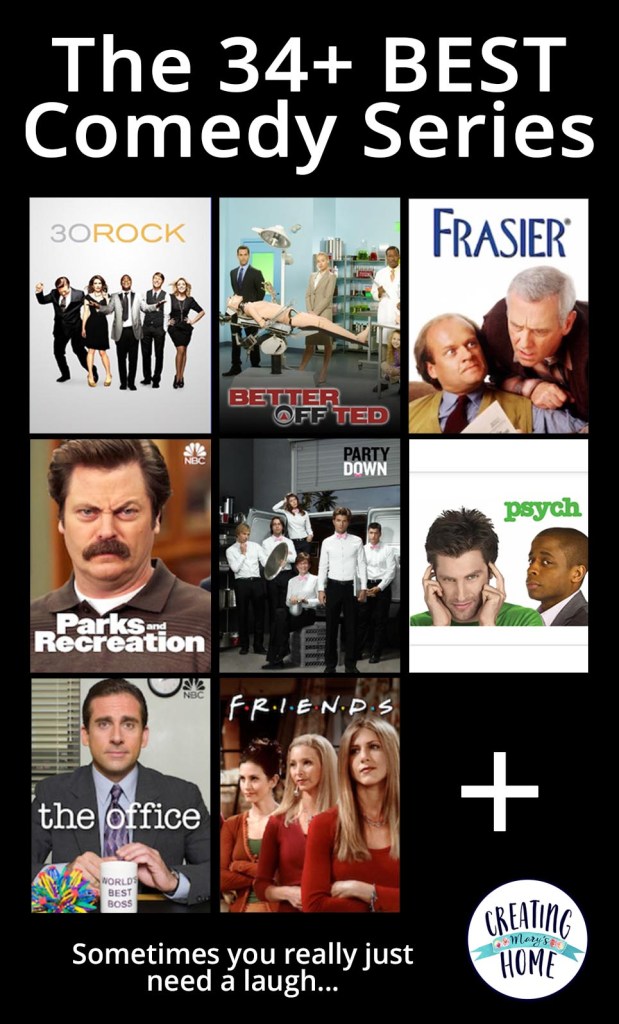
The majority of people who write sitcom shows don't have any idea what they are doing. As a result, they often end up getting the tone of their shows all wrong, making them either too dark or too silly. You must understand the content and audience to make a sitcom successful. This means that the tone should be light and realistic.
Humor that is character-driven
Character-driven humor is a type of comedy that is focused on developing the characters rather than the plot. Comedy is about the characters and their relationships. This allows the audience to relate to the characters and makes the comedy more successful. This approach can be used in several ways in sitcoms.
Writers are more focused on the energy and tone of the central group of friends in early "hangout" comedies. Shows like "New Girl" excel at letting characters have hours of banter and having fun. Although there are occasional glimpses at plot development, character stories rarely dominate the series.

Situation comedy
The development of situation comedy on television traces its roots to the development of radio programming. Radio broadcasts started out as experiments and were often focused only on music, drama, public affairs, and other topics. Radio had become the most popular form of entertainment in the United States by the 1960s. Amos 'n Andy, a comedy show that began on WMAQ Radio in 1929 was one of America's longest-running radio programs.
Radio began broadcasting situation comedy shows in the 1920s. In 1926, the duo Sam and Henry made their debut on the radio. They were originally from Chicago's Clear Channel Network. CBS quickly followed suit and the series was one of the most loved sitcoms of all time. Despite their American origins sitcoms spread throughout the world and continue to be produced today.
Live-action sitcoms
If you're a fan of live-action sitcom shows, there's no shortage of choices to watch on television. Some of the most beloved sitcoms have survived for decades, while others have become timeless classics. "It's Always Sunny in Philadelphia," for instance, recently got renewed for a record-breaking fifteenth season, and "Seinfeld" has been running for nine seasons. The longest-running animated comedy series are "South Park" (and "The Simpsons") And now "It's Always Sunny", the longest-running live-action sitcom series, will surpass Harriet and Ozzie.
Sitcoms are great for having a good time and getting a laugh. Many of the characters are flawed and often have an irreverent, witty message. Despite their flaws they are still charming and funny, and many people find them to be relatable.

Running gags
Funny jokes or "running gags" are a great way to keep viewers engaged on a sitcom. These are jokes that are repeated over again, gaining power as they become more familiar to the audience. To be considered successful, a running gag must be repeated at most three times. Running gags are a common feature on some sitcoms, but others only use them once or twice for maximum impact.
Running gags are usually limited to an episode. However, they can recur through a series. They can also take on different variations, such as the Lampshade Hanging, Didn't We Use This Joke Already?, and the Running Gagged, where a character breaks the fourth wall to mention the joke.
FAQ
What cost does it take to produce a commercial product?
Producing commercials costs money. The amount depends on the length of the spot, the number of actors involved, the location where the shoot takes place, etc.
A 30-second commercial typically costs between $20,000 and $40,000.
Are TV commercials targeted at target audiences?
The best way to target an ad is to know what people are watching at the time they're watching it.
Also, you can advertise during football games if your goal is to reach football-loving people. Advertise during movie times if you want to reach people who are interested in movies on Friday evenings.
If you want to reach people when they're eating dinner, then advertise during prime-time shows.
Knowing what people do after seeing your ads is key. That means having access to data about what programs they're watching.
Thanks to new technologies, such as DVRs or streaming video, data is now more easily accessible.
But don't forget that every person has his own preferences. So it's impossible to predict exactly which program someone will watch next.
This is why it's so important to test different types ads. Based on real-world feedback you will discover what works the best.
What is a TV Spot?
A TV spot is usually a 30-second advertisement that appears between programs on a television station.
Many channels will air multiple TV spots daily. Each TV spot will typically focus on a single topic or theme. These spots are often intended to promote a company or brand.
In addition to promoting products or services, TV commercials can also be used to market events, political campaigns, charitable organizations, and even movies and music videos.
What are the different styles of commercials?
The three main types of commercials are TV Commercials, Radio Commercials, and Print Ads.
TV commercials last about 30 seconds. They're frequently used to increase brand awareness.
Radio commercials last longer (usually around 1 minute) and are often used to promote products.
Print ads are shorter (usually 2-3 minutes), and they're usually aimed at specific audiences.
Statistics
- With OTT ad revenue set to increase from 45% to 60% over the next decade, AdTech pioneers and early adopters of OTT advertising will reap its benefits in the near future. (clearcode.cc)
- In fact, 76% of people completely skip the commercials while watching their programs. (qualitylogoproducts.com)
- To get estimated costs for airing a 60-second TV commercial in different regional markets, check out the following figures in this TV ad pricing chart from the media experts at Casual Precision. (fitsmallbusiness.com)
- This includes 97 percent of Gen X, and 95 percent of Millennials. (marketingevolution.com)
- In fact, when the ad first launched, Dos Equis quickly became one of the fastest-growing beers, increasing its sales by over 22%. (qualitylogoproducts.com)
External Links
How To
What does the TV Advertising Industry do?
The TV advertising industry is made up of many companies who all have to come together to ensure that the adverts are shown on TV at the right time and place for maximum effect. Ads that are not offensive or relevant to viewers must also be considered.
The media buying firm buys airtime from networks. They then sell the airtime to the advertiser. Advertisers pay for this airtime. You can buy specific timeslots or just buy the whole day.
After the purchase of airtime, the media buying firm sends the advertisement to the network. The network broadcasts the ad at its scheduled broadcast time.
Viewers may click on the advertisement link if they are interested. If they do click on the link, then the advertiser pays the media buying company again.
This continues until your advert is complete. The media buying company collects the money from the advertiser at the end of the ad-break and transfers it to the network.
Advertising agencies create and send the ads to media buying firms. They also manage the creative side of the campaign.
They also manage creative aspects and communicate with clients regarding the content. They also manage the production process and work with clients to determine the budget.
They are responsible for overseeing the entire campaign and keeping track of all activities.